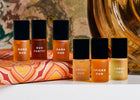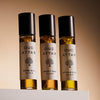

The historical use of agarwood has been associated with cultures in the middle east, India, China and Japan for spiritual, opulent and aphrodisiac purposes. Agarwood trees have to go through a long process before the oud resin is produced; they become vulnerable to infection when an insect penetrates the out layers of the tree. Once the infection starts, the tree goes into a defensive mode, which creates a resin. This is extracted from the fungus-infected of the Agar tree.
It is often associated with serenity, peace and harmony when applied regularly. It is a great aid for meditation and removing bad energy from home. It is also known to enhance mental clarity and ease neurotic and obsessive behaviour.
Mainly in the middle east, men and women will burn Oud chips in their homes to scent the space and clothing. It is believed that their prayers rise with the scented smoke.
The medical use of agarwood has been recorded in Greek and Roman, Chinese, Middle Eastern, and European literature. It is not unusual to find agarwood included in the long lists of valuable items as offerings to important people or tributes to other nations.
As the resin is only triggered by the infection, estimations suggest a total of only 2% of these trees produce it. This contributes to its luxurious and expensive status. It is also called liquid gold as pure oud oil can cost around £3,600 per pound or £200 per gram. It is one of the most expensive ingredients in the perfume industry. The demand exceeds supply, which also contributes to an increase in price.
It is one of the most luxurious ingredients around the world and is used for the production of incense and perfume; it has gained a lot of popularity in recent years and is now seen in almost any shop that sells perfume, incense and candles.


